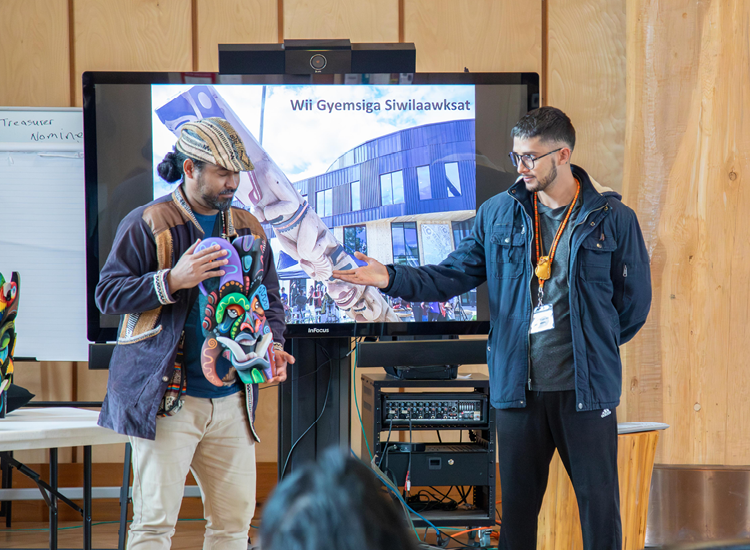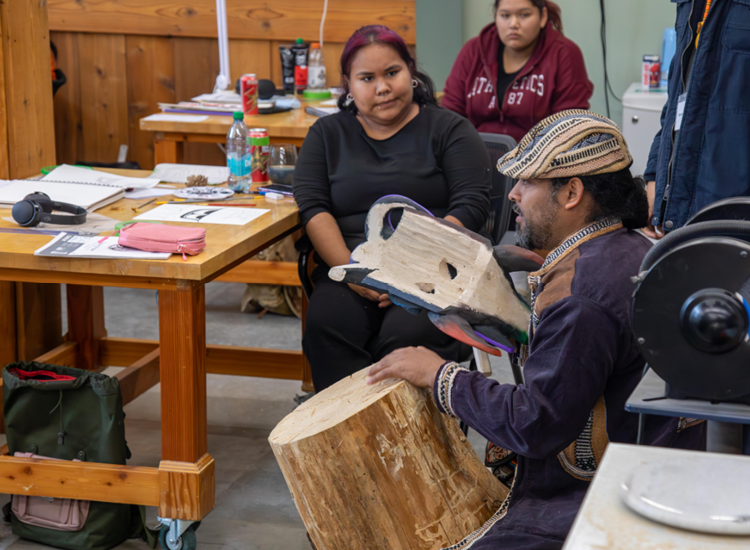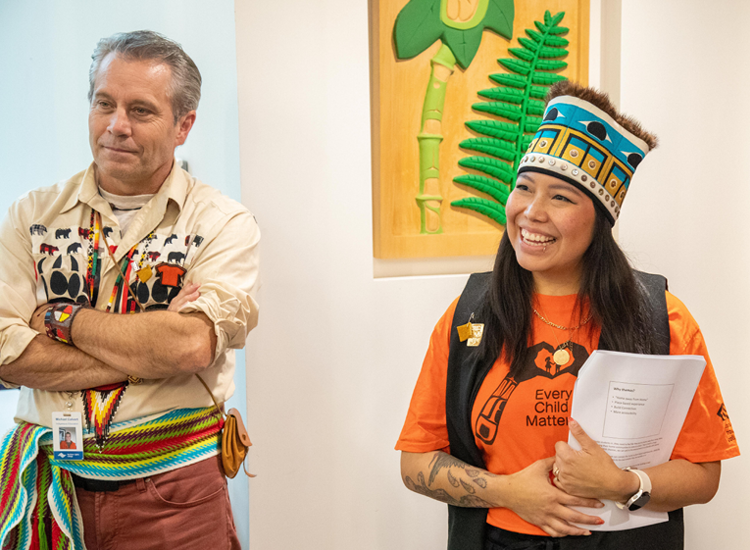Terrace, BC – On Monday, September 29th, Coast Mountain College (CMTN) was honoured to host Harol Yoshuan Garcia Frasser, a Bruncajc Knowledge Holder from Costa Rica, along with Brandon Enrique Gonzalez Villalobos, his interpreter, and Michael Calvert, Director of Indigenous Education for Northern Lights College. This stop was the first of six as Harol and his team travel across Northern BC to share his people’s history, culture, and worldviews. This circuit, a joint initiative of the University of Northern British Columbia, College of New Caledonia, and Northern Lights College, is aimed at bringing people together to learn from each other and build understanding between Indigenous and non-Indigenous communities.
“Bruncajc Indigenous Territory, translates to ‘valley or place of ashes’ in Spanish. However, the culture and the people are known as ‘Boruca,’ a word that is a distortion of our true name in our native language: Bruncajc,” Harol explains.
Harol brought with him two traditional warrior masks carved from balsa wood and spoke to CMTN employees and students about the significance of each and the stories behind them. Harol also described the ceremonies and traditional uses of the masks, as well as other parts of his culture.
Harol says his people learn the Di’tegat (Bruncajc) language, farming, traditional housing, natural medicine, and yade’ (food) prepared with the warmth of the yicra (fire). Oral history is passed down from the Elders through stories and legends, enriched by sodij qui (art). “Combined with music, fire, traditions, knowledge, and respect for nature, this is what makes us Indigenous every day,” he says.
After a meal of locally-caught salmon chowder and fried bread, the group visited the Freda Diesing School of Northwest Coast Art, where Harol and his team spoke to the students about how art can communicate across all cultures, languages, and groups of people. Students asked questions about the techniques used in carving balsa wood versus cedar and compared cultural uses for crafts such as masks and drums.
“Through art, we can communicate. It is our universal language,” Harol told them.
Next, the visitors received a tour of Wii Gyemsiga Siwilaawksat, the student housing complex on CMTN’s Terrace campus. The tour was led by Jillian Swank (traditional Nisga’a name: Hlgu K’aa Kw’adikskw ahl lax uhl n̓eekhl n̓eekhl), one of the Terrace campus’ First Nations Access Coordinators who worked with the housing committee responsible for curating and planning the building’s themes and artwork.
Ali McDougall, CMTN Indigenous Relations and Executive Advisor to the President’s Office says, “Having Harol and Brandon come from Costa Rica and share their culture with us was a unique opportunity we could not pass up. It was wonderful to hear similarities between the Bruncajc culture and the Nations in our service region: Haida, Ts’msyen, Nisga’a, Haisla, Gitxsan, Witsuwit’en, and our Tahltan neighbours. The visit presented a wonderful opportunity for CMTN to showcase the immense Indigenous culture we have at the Terrace campus.”
In the coming weeks, Harol and his team will travel to the Nisga’a Valley, then to Prince George, Fort St. John and finally to Dawson Creek before returning home.

Harol (left) and Brandon (right) showcase a Bruncajc warrior mask to attendees in Waap Galts'ap.

Harol speaks to students in the Freda Diesing School of Northwest Coast Art about Bruncajc carving techniques in basal wood versus using cedar.

Michael Calvert and Jillian Swank discuss the artwork collection in the atrium of Wii Gyemsiga Siwilaawksat.
###
Media contact:
Heather Bastin
Executive Director, External Relations
hbastin@coastmountaincollege.ca